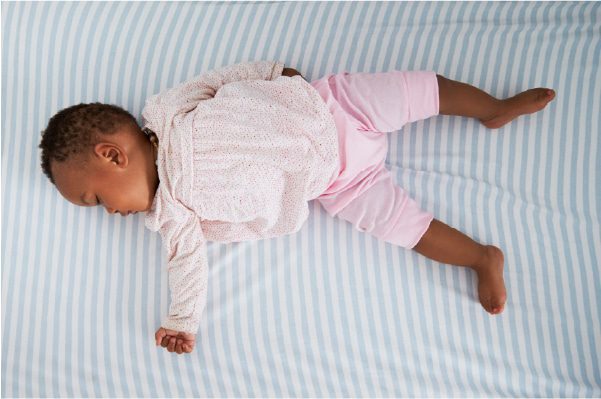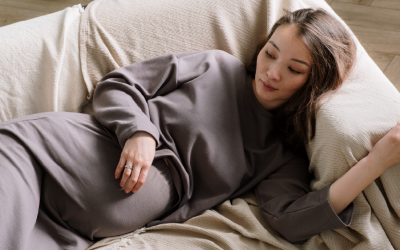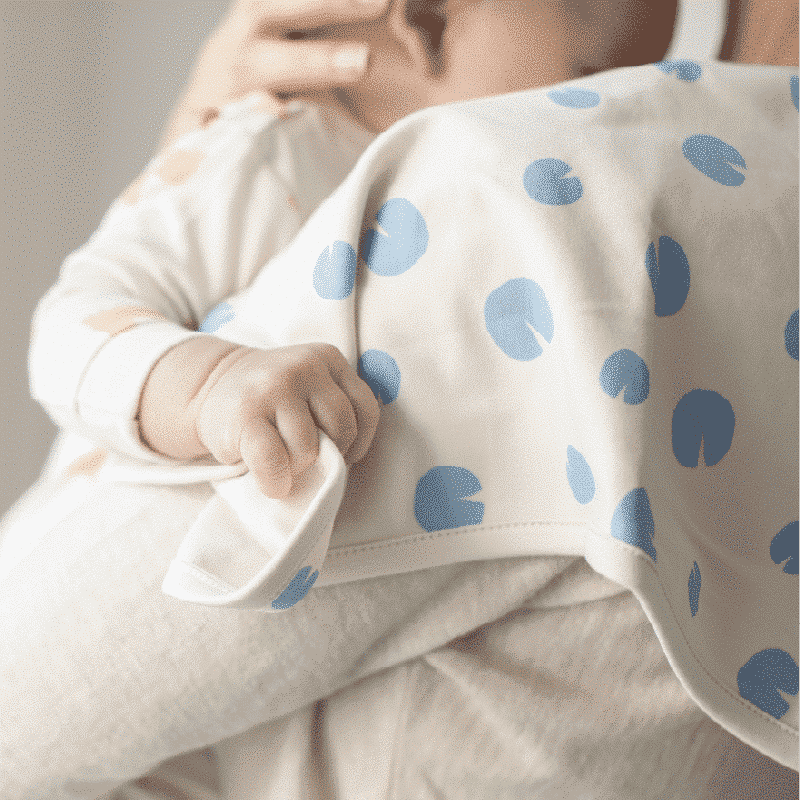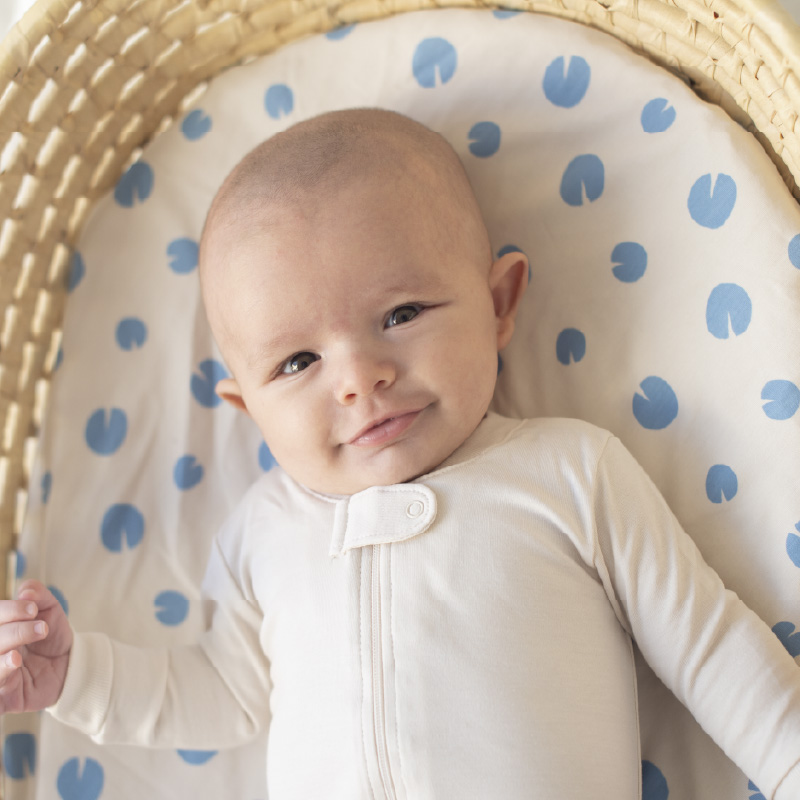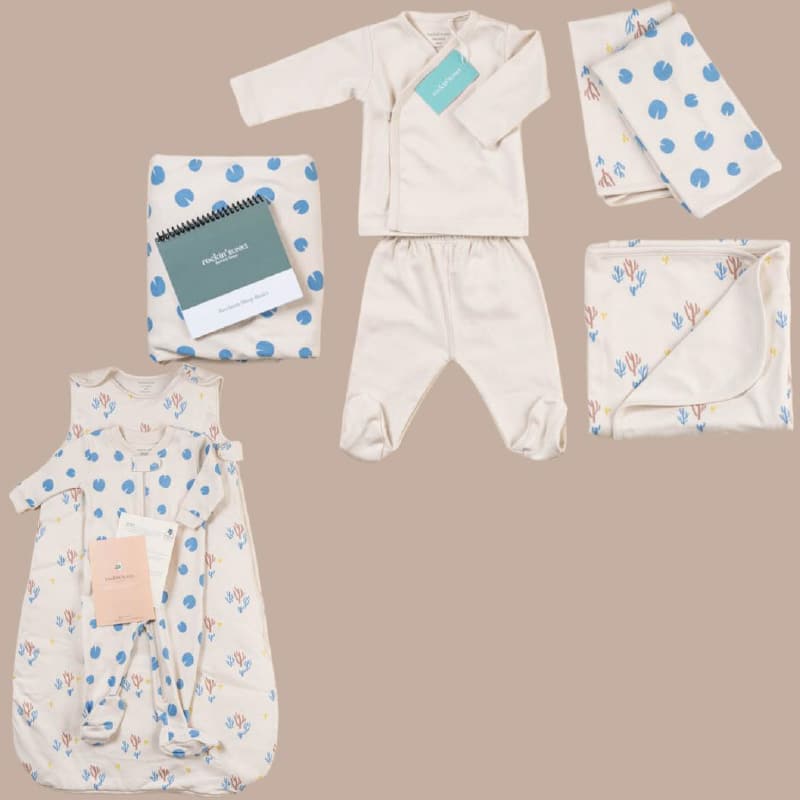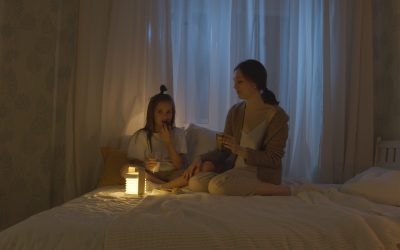“Is he sleeping through the night yet?”
If you have a baby, you’re probably getting that question from everyone you know. Friends, your pediatrician, even your mother-in-law are all probably asking, “are you going to sleep train?”
But what even is sleep training? Won’t your baby just sleep on his own eventually?
Your Rockin’ Blinks Cheat Sheet:
- Healthy sleep habits start in the newborn days by observing your baby’s sleep signs.
- 16-weeks is a great time to start working on your baby’s regular sleep routine and schedule.
- Focus on lifestyle changes, like creating a consistent bedtime routine and a restful sleep environment.
- Sleep training” does not have to be rigid or scary.
While some people treat sleep training like a “formal process”, I teach families that sleep training should actually start with healthy sleep habits in the newborn days. Sleep training is simply teaching your baby to sleep when he really needs it – to self-soothe and to realize that sleep is a good thing and not something to fight. In this article, I will explain how to create a sleep-inducing routine with both verbal and nonverbal cues.
You’ve probably heard of some of the more popular sleep training methods: Ferber, Pick Up / Put Down, Cry it Out. While you might consider following a formal sleep training process at some point in your baby’s life, you can also start giving your baby opportunities to slowly practice falling asleep when he is tired and giving him the necessary predictability and environment to relax and fall asleep without fighting .
Through Rockin’Blinks, we teach families to think about sleep the same way they think about eating healthy or exercising – in a holistic way.
Your Baby’s Sleep Associations
Creating healthy sleep habits starts with learning to recognize your baby’s sleep associations. Sleep associations are the things, actions or steps your baby needs to fall asleep.
In my house, sleep associations include pulling down the blinds in my children’s bedroom, turning on the sound machine and nightlight and snuggling for a bedtime story. Things might be different in your house, especially if you have a young baby, and that’s perfectly fine.
Each baby develops their own associations as we create their routines to help them sleep. Yours may fall asleep nursing or drinking a bottle. Or maybe you need to rock him with a very specific rhythm.
As your baby grows, those sleep associations may stop working. You may find yourself wondering: Is it wrong for my three-year-old to only fall asleep with a bottle? Or is it wrong for your 12-month-old to only fall asleep if he’s rocked? No, not by definition.
But there may be a point where you worry about your child’s sleep quality because of their habits. If your baby needs support from you when they wake up overnight, whether it’s rocking or a bottle or something completely different, there are now two problems: 1. Your child is not getting good quality sleep and 2. Their sleep problems are now affecting you.
Sleep quality matters. While newborn sleep is fragmented by nature, as your baby grows, he will need more consolidated sleep to feel well rested and get all the benefits from good sleep.
Your Newborn’s Sleep Habits
The most important thing in the newborn days is to keep your baby well rested. And being well rested at this early age looks very different than what you may be expecting.
You may hear people tell you a baby should not get used to being held all the time, or that if they are rocked to sleep in these early days, they’ll become dependent. But the truth is: snuggling and holding your baby is what these newborn days are all about. This is not a time to worry about sleep associations.
Things to know at this stage:
- There’s no regular schedule! Don’t expect a newborn to follow a clock.
- Learn your baby’s sleep cues. These are the quiet signals (yawns, stretches) that show they’re ready to sleep.
- Your newborn can only stay awake for short periods, and those sleep signs will start to show after about 45 minutes of awake time (including feeding time).
- Natural light exposure early in the morning is associated with more consolidated sleep by 6 weeks of age.
6 to 8-weeks
Your baby’s day/night confusion should start shifting around the time they hit 6-to-8-weeks of age. Finally, he will start to sleep when it’s dark and stay awake for longer stretches during the day. That’s because your baby’s little body is finally producing its own melatonin.
At this point, I recommend adjusting bedtime and putting your baby down for the night a little earlier, which will help him get better sleep at the beginning of the night.
Your baby is learning so much at this age. He is starting to connect information; you can see this happening in his facial expressions. If your baby smiles when he sees you, it’s not a coincidence: he recognizes your voice and your face, and is genuinely happy. If he can connect information like that, he can connect information about sleep, too.
I tell families that this stage – the six to eight week mark – is time for caregivers to be more consistent about the sleep routine. You want your baby to learn the steps to do when he is tired and ready for sleep.
16-weeks and older
Time to get to work! I consider the 16-week mark the perfect time to start working on your baby’s overall sleep hygiene. This means his sleep habits, environment and schedule.
Around the 16-week mark, your baby will naturally start organizing his sleep into bigger daytime chunks and will also become more consistent about when he wants to nap.
Your baby should be napping 3 or 4 times a day at this stage and will not tolerate more than two hours awake between the last nap of the day and bedtime. That means your baby will likely be ready for bed at 6 p.m. – and while that may seem way too early to you, it’s perfect for 16-week-old babies.
How to Build Your Baby’s Sleep Routine
The first step to creating a meaningful change in routine with your baby is to clue them in to what’s going on. Create a pre-bedtime routine that will signal to your baby that sleep is coming.
- There is no “right” sleep routine; instead, create a routine that works best for your family.
- Your routine may look like: a warm bath, snuggling for bedtime stories, then sleep.
- If your sleep routine includes feeding right before bed, consider separating the feeding session from their sleep. You may find it helpful to feed your baby outside of the room where he sleeps. This is a nonverbal way to show your child eating is not a sleep cue.
- As your baby grows, you can make feeding a moment of connection instead of a lull to sleep. Take this time to talk with him about your day, or tell a story. Your baby loves hearing your voice and connecting with you in this way.
Pro tip: Separating the feed from sleep helps ensure your child isn’t dependent on the feed and can put themselves back to sleep if they wake overnight.
Prep your Baby’s Sleep Environment
As you enter the nursery with your baby, use both verbal and nonverbal cues to help your little one know it’s time to sleep. You can do this by narrating what’s happening: “I’m lowering the blinds now so your room will be nice and dark while you sleep tonight.”
Let your baby see you pull down the shades, turn on white noise or turn on the nightlight. As your baby gets older, letting him help you with these pre-bedtime tasks will empower him to understand the steps he needs to take to get a good night’s sleep.
Complete your bedtime routine (snuggle, book, massage), then put your baby in his crib awake and say goodnight.
Put your baby in the crib awake
Yes, you read that right – awake!
During the early newborn days, you might put your baby down when he is already asleep, or may be a little drowsy, but after 3-4 months old, I really encourage parents to put baby down wide awake. Giving your baby opportunities to recognize the place where he is falling asleep after a relaxing loving sleep routine, will help him feel more and more comfortable falling asleep in his crib.
I recommend putting your baby in their crib awake so if/when he wakes up overnight, he isn’t confused about where he is. The goal is that he will recognize his crib and know what to do when he is tired and wants to fall asleep.
Putting your baby in the crib awake also allows him to develop the skills necessary to go from awake to asleep without any extra things that are outside of his control, like a fresh bottle or being rocked. It allows your baby to learn self-soothing techniques, so he isn’t dependent only you for rest. Newborn babies usually surprise us doing this while on their playing matt, we get distracted doing something else and our baby fell asleep right there, playing. By creating a consistent sleep routine and put our baby down when he is tired, we want him to discover that he can do just that in his own crib.
Pro tip: this is going to be hard – for both of you! The first time you leave your baby alone in the crib to fall asleep will be difficult. Your baby will likely struggle to fall asleep at first. We all struggle learning something new sometimes, and that’s okay.
The Sleep Ladder
I am not suggesting you drop your baby in the crib and forget about him. We still need to give reassurance to our little ones who are learning to sleep alone for the very first time.
One of my favorite resources for supporting sleep with young babies is The Happy Sleeper book. In The Happy Sleeper, the authors introduce the idea of the Sleep Ladder, which is a way to support your child through this independent sleep training.
To create your own Sleep Ladder, choose six or seven steps that ascend from the least amount of intervention to more intervention. You can use these interventions to support your baby as they learn to fall asleep on their own. Give each step a few seconds before moving on to the next – you want to give these interventions time to work before moving on to the next.
Here’s an example of a seven-step sleep ladder:
- First step: Stand silent at the door for 30 seconds
- Second step: Get closer midway to the crib
- Third step: Use your voice “sh sh sh” or “I hear you baby, I am here”
- Fourth step: Get closer to the crib
- Fifth step: Put your hand on his belly
- Sixth step: Offer a pacifier
- Seventh step: Pick up your baby
Again, this is an example, and you can create your own ladder, only moving to the next step if your baby is seriously struggling. As you and your baby feel more comfortable, you can spend more time before moving forward with the next step.
One-on-One Consulting
As a sleep consultant who has worked with hundreds of families, I know that sleep training is not one-size-fits-all. Each unique family needs their own unique sleep plan – and I am available to support and help your family on this journey.
Good sleep is essential for a happy healthy childhood and life. Book a consultation with us now!
Subscribe to our Newsletter and get the latest in sales, sleep information and more

